Attached files
| file | filename |
|---|---|
| 8-K - 8-K - SunCoke Energy, Inc. | d370130d8k.htm |
 Exhibit 99.1 |
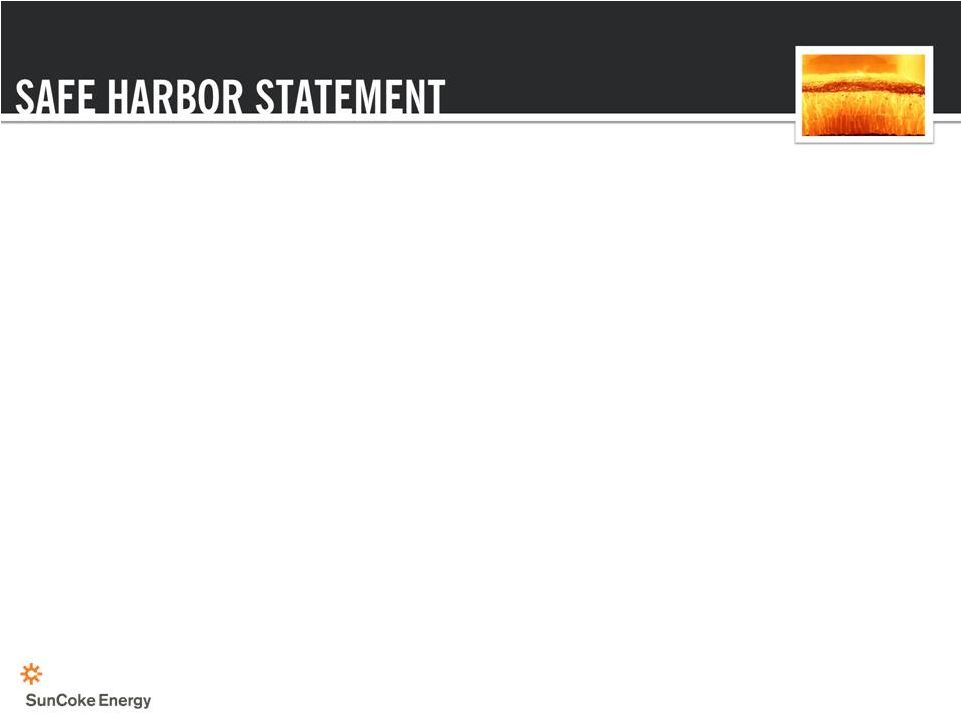 Some of the
information included in this presentation contains “forward-looking statements” (as defined in Section 27A of the
Securities Act of 1933, as amended and Section 21E of the Securities Exchange Act of 1934, as
amended). Such forward-looking statements are based on management’s beliefs and
assumptions and on information currently available. Forward-looking statements include the
information concerning SunCoke’s possible or assumed future results of operations, business strategies,
financing plans, competitive position, potential growth opportunities, potential operating performance
improvements, effects resulting from our separation from Sunoco, the effects of competition and
the effects of future legislation or regulations. Forward- looking statements include all
statements that are not historical facts and may be identified by the use of forward-looking
terminology such as the words “believe,” “expect,” “plan,”
“intend,” “anticipate,” “estimate,” “predict,” “potential,” “continue,” “may,”
“will,” “should” or the negative of these terms or similar expressions.
Forward-looking statements involve risks, uncertainties and assumptions. Actual results may
differ materially from those expressed in these forward-looking statements. You should not put
undue reliance on any forward-looking statements.
In accordance with the safe harbor provisions of the Private Securities Litigation Reform Act of 1995,
SunCoke has included in its filings with the Securities and Exchange Commission cautionary
language identifying important factors (but not necessarily all the important factors) that
could cause actual results to differ materially from those expressed in any forward-looking statement made
by SunCoke. For more information concerning these factors, see SunCoke's Securities and Exchange
Commission filings. All forward-looking statements included in this presentation are
expressly qualified in their entirety by such cautionary statements. SunCoke does not have any
intention or obligation to update any forward-looking statement (or its associated cautionary language),
whether as a result of new information or future events or after the date of this presentation, except
as required by applicable law. This presentation includes certain non-GAAP financial
measures intended to supplement, not substitute for, comparable GAAP measures. Reconciliations
of non-GAAP financial measures to GAAP financial measures are provided in the Appendix at the end of
the presentation. Investors are urged to consider carefully the comparable GAAP measures and the
reconciliations to those measures provided in the Appendix, or on our website at
www.suncoke.com. |
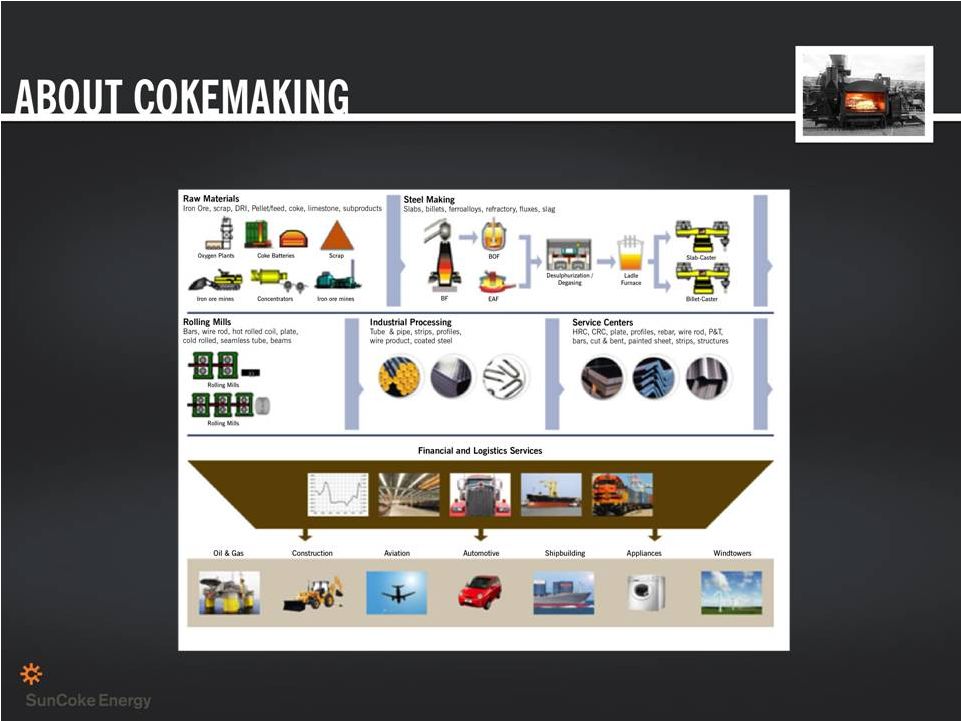 |
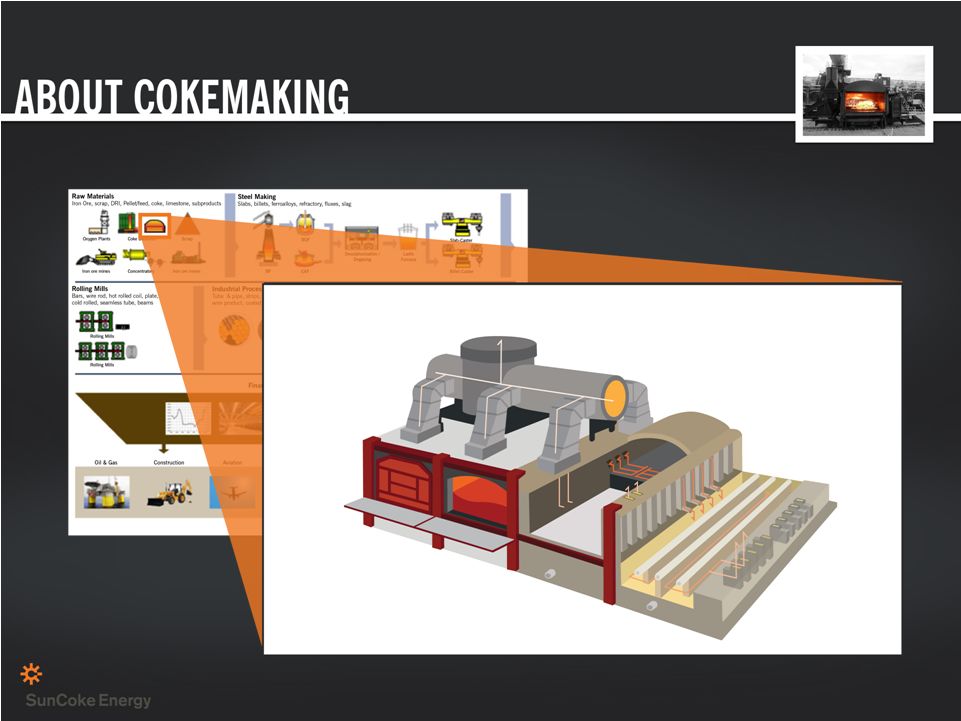 |
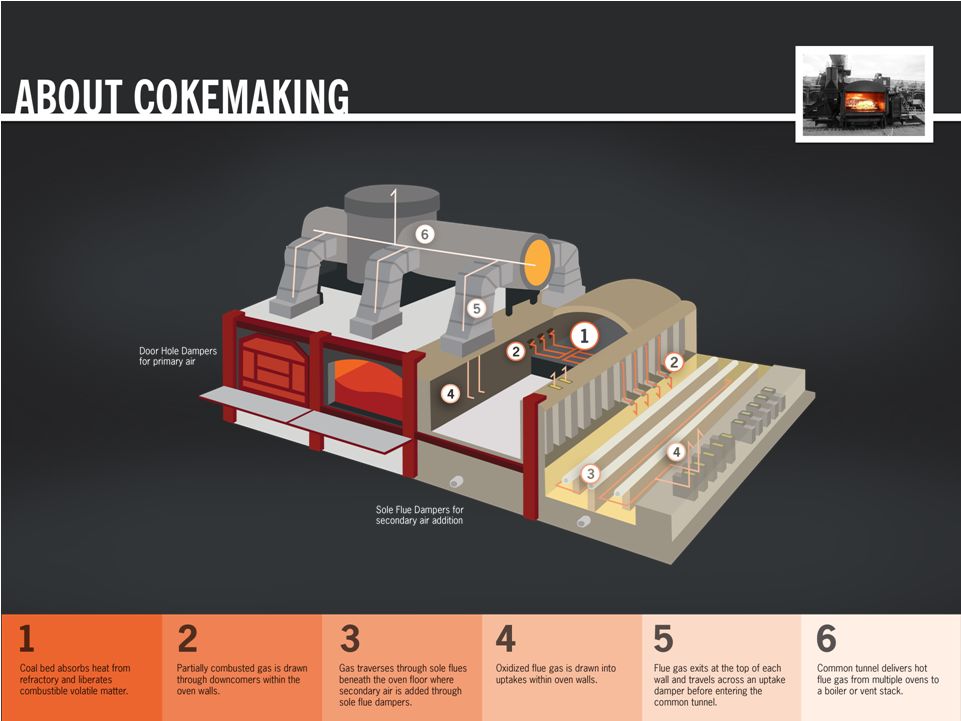 |
 |
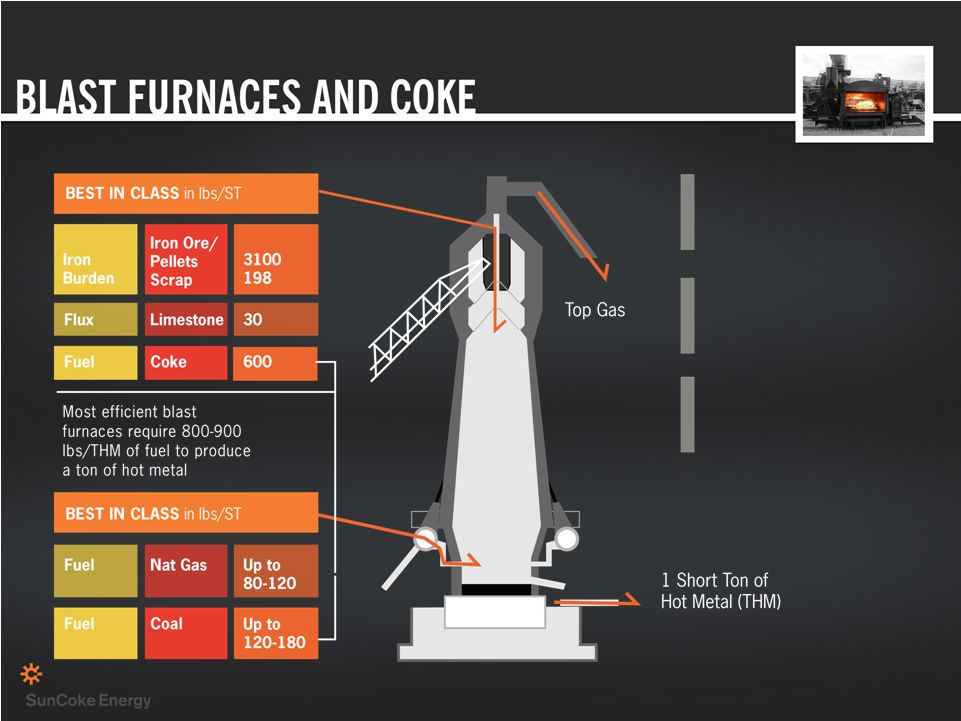 Blast furnaces are the
most efficient and
proven method of
reducing iron oxides into
liquid iron
Coke is a vital material to
blast furnace steel making
We believe that stronger,
larger coke is becoming more
important as blast furnaces
seek to optimize fuel needs |
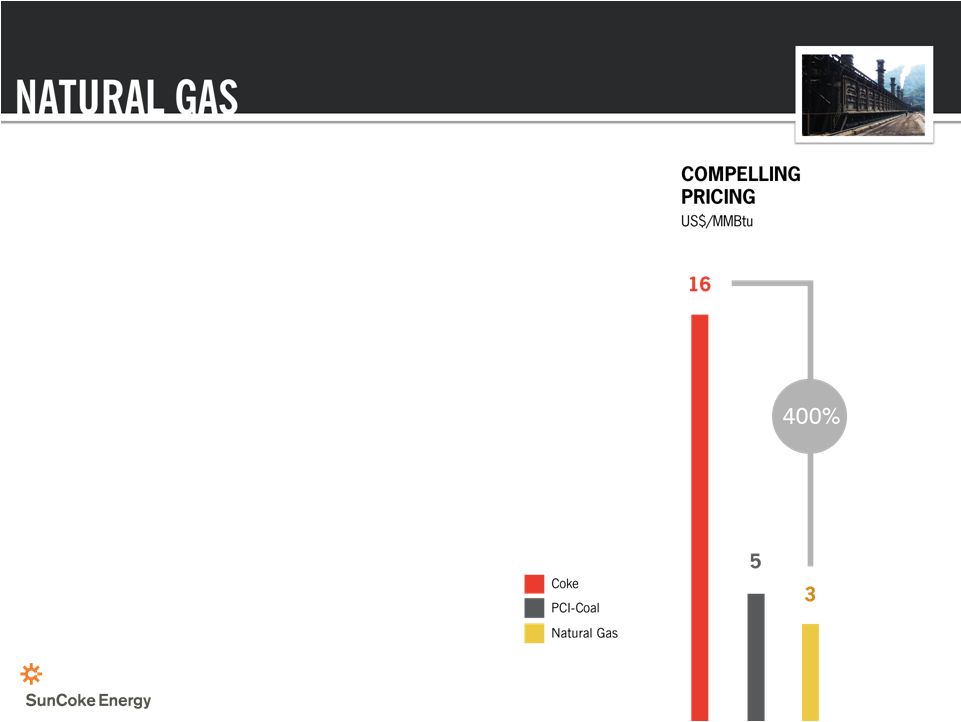 -
Natural gas cannot replace 100% of coke needs in
a blast furnace
-
At best, we believe natural gas can
replace about 30%
-
In order to optimize use of natural gas, stronger and larger
coke is required
-
Alternative iron oxide-reducing technologies take time to
implement, require significant capital commitments
and are energy intensive
-
Both low-cost natural gas and power are required to
make alternative technologies viable
CHALLENGING EXECUTION
Source: CRU, SXC Analysis |
 -
Largest independent producer of
metallurgical coke in the Americas
-
Six cokemaking facilities (five in the U.S.
and one in Brazil)
-
Approximately 5.9 million tons per year
cokemaking capacity
-
1,180 employees (980 U.S. / 200 Brazil)
-
CY 2012 Guidance results driven by strong
coke business performance
-
Successful Middletown startup
-
Improvement at Indiana Harbor
-
Yield/cost improvement at other facilities
(1)
For a definition of Adjusted EBITDA and reconciliation,
please see the appendix. |
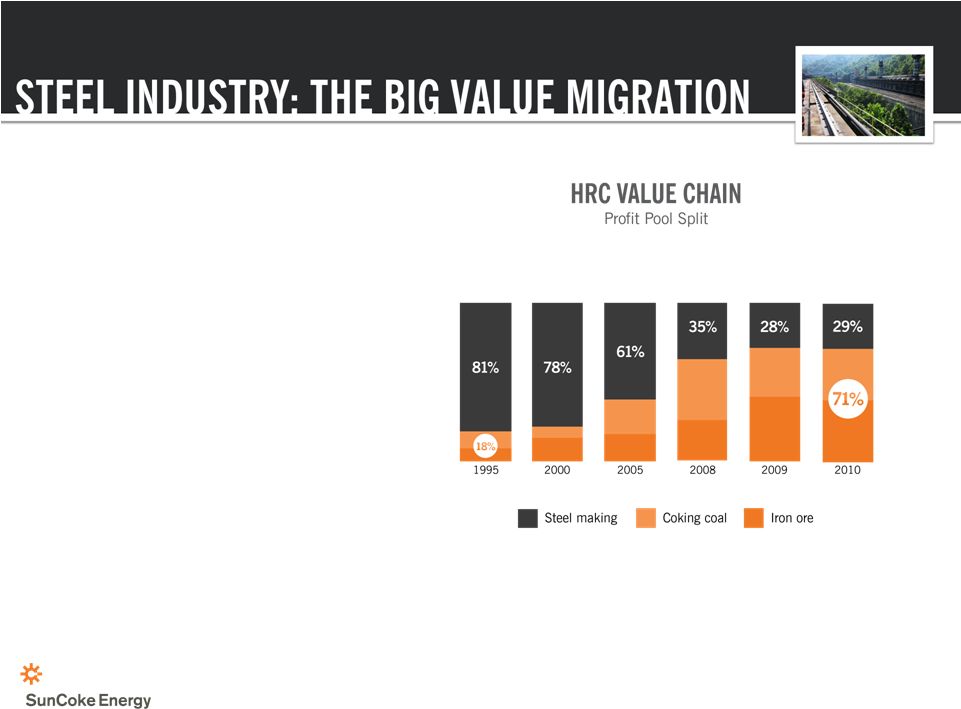 -
Fundamental shift in value allocation
between miners and steel makers in
the last decade
-
Urbanization boom in emerging
economies and iron ore and coal
industry consolidation triggered
price super cycle
-
Traditional fixed-cost intensive
businesses now must focus on
variable cost structure
-
In response, steel makers are
deploying two strategies:
-
Vertical integration
-
Capital rationalization
Source: McKinsey |
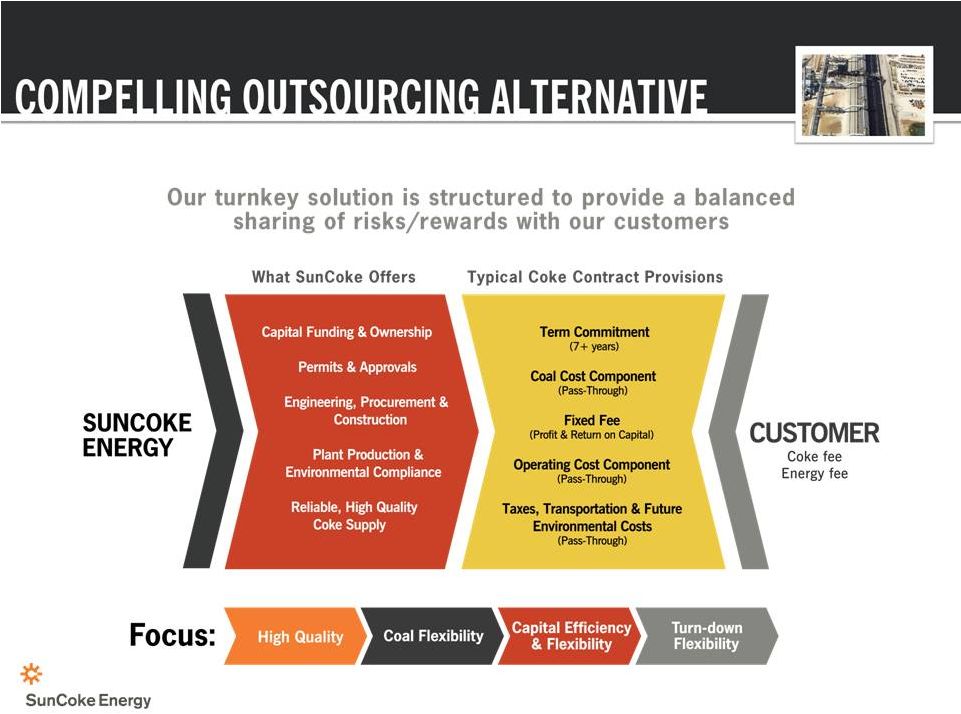 |
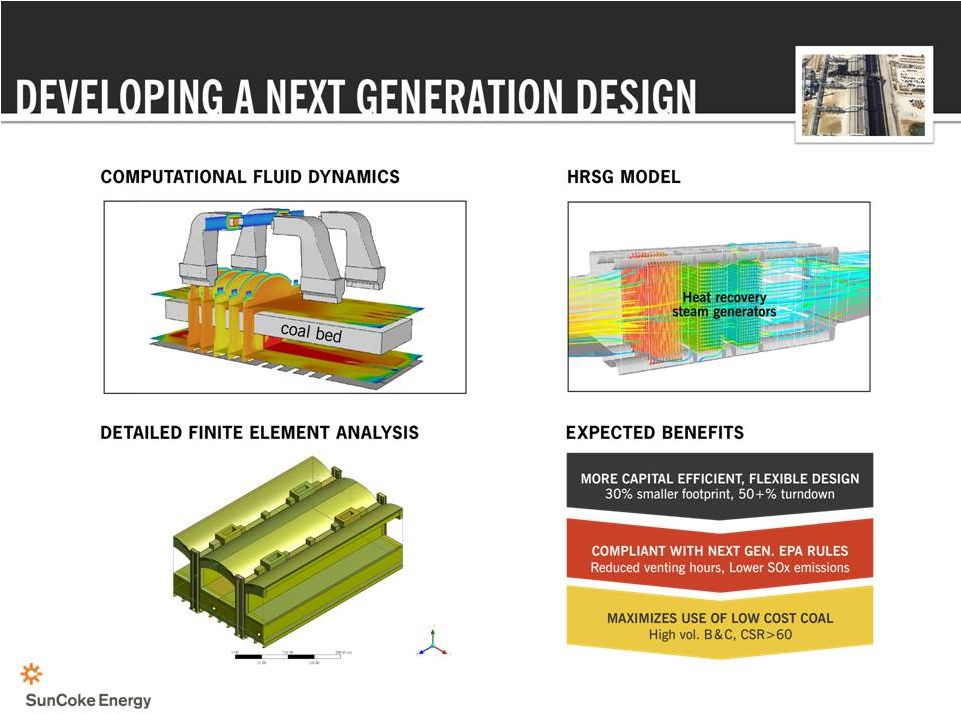 |
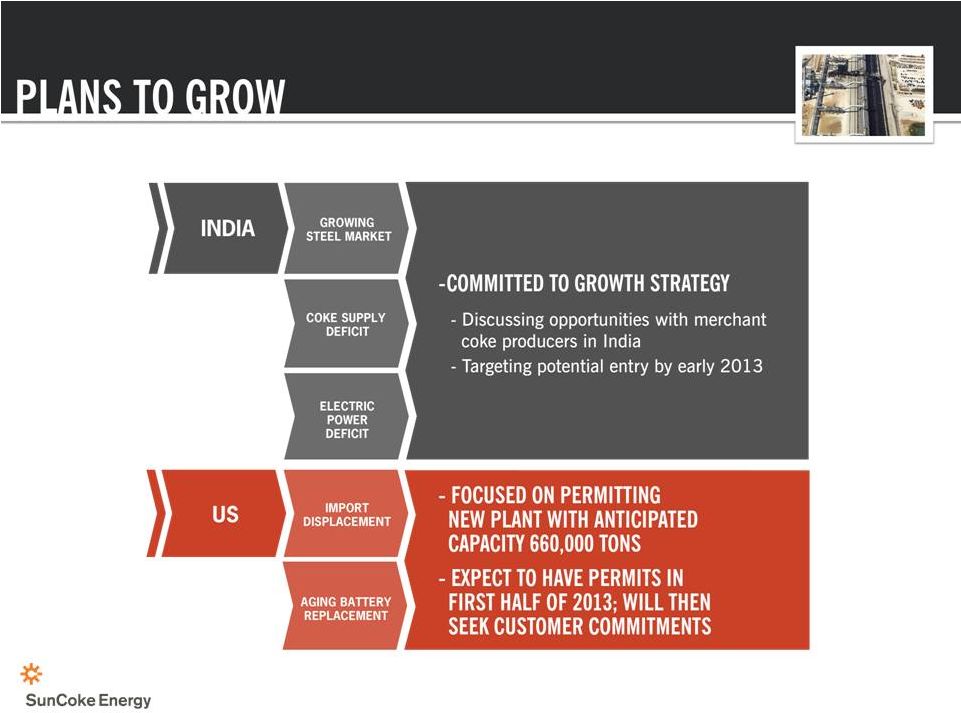 |
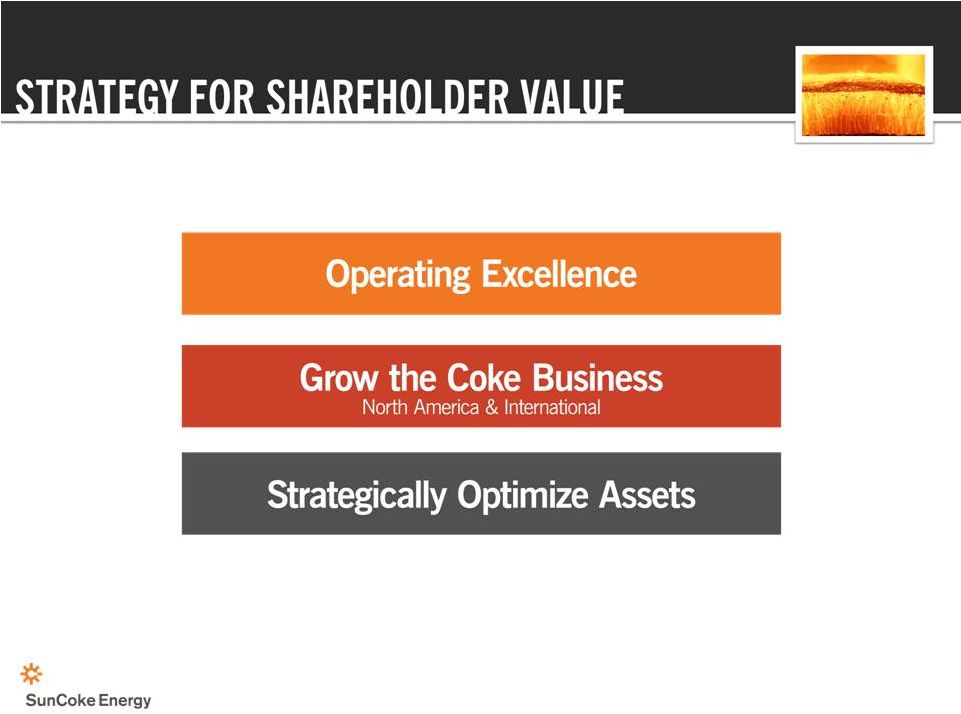 |
 |
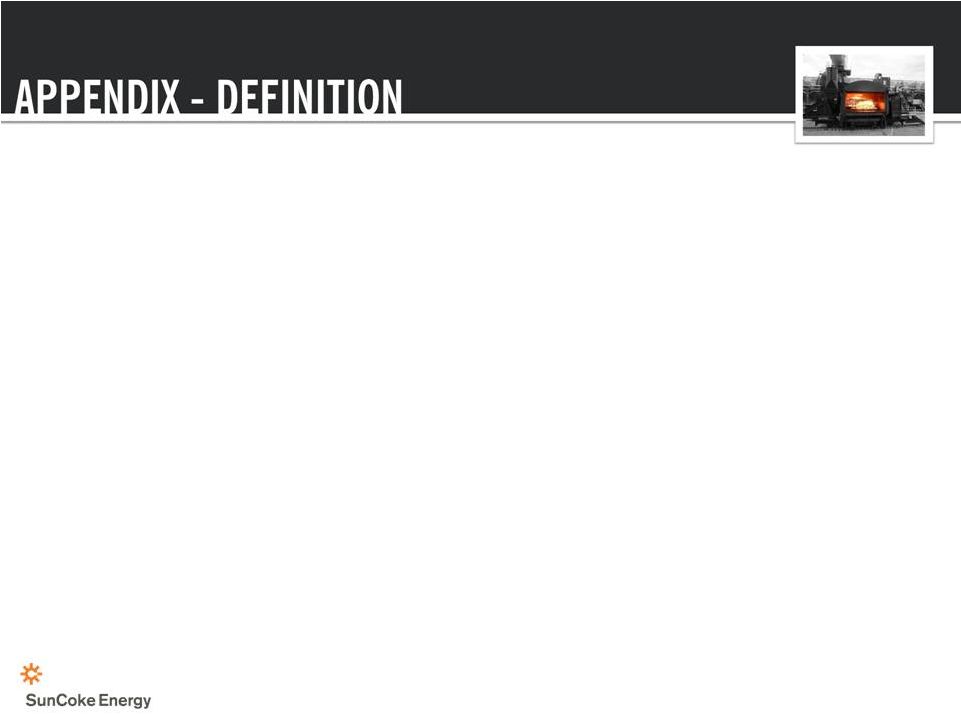 Adjusted EBITDA
represents earnings before interest, taxes, depreciation, depletion and
amortization (“EBITDA”) adjusted for sales discounts and the
deduction of income attributable to non-controlling interests in our
Indiana Harbor cokemaking operations. EBITDA reflects sales discounts included as a
reduction in sales and other operating revenue. The sales discounts represent the
sharing with Adjusted EBITDA would be inappropriately penalized if these
discounts were treated as a reduction of EBITDA since they represent
sharing of a tax benefit which is not included in EBITDA. Accordingly, in computing
Adjusted EBITDA, we have added back these sales discounts. Our Adjusted EBITDA
also reflects the deduction of income attributable to non controlling
interest in our Indiana Harbor cokemaking operations. EBITDA and Adjusted
EBITDA do not represent and should not be considered alternatives to net income
or operating income under United States generally accepted accounting principles
(GAAP) and may not be comparable to other similarly titled measures of
other businesses. Management believes Adjusted EBITDA is an important
measure of the operating performance of the Company’s assets and is indicative
of the Company’s ability to generate cash from operations.
|
 |
 |
